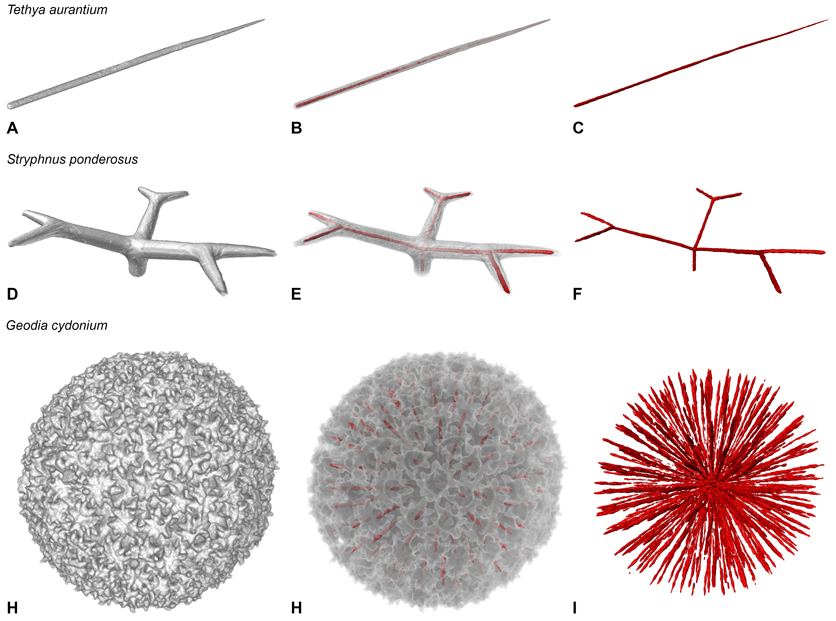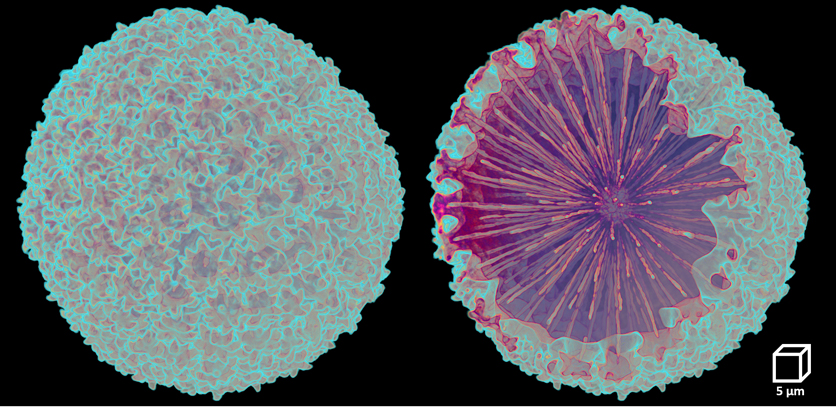- Home
- News
- General News
- A study reveals...
A study reveals half billion year old fabrication mystery of nature
18-10-2017
A study published in Science Advances reveals a half billion year old fabrication concept, employed by nature, which only recently has been used by mankind to produce novel technologically relevant nanomaterials. Using data from three different X-ray imaging and analysis instruments at the ESRF, the European Synchrotron, Grenoble, France, the international team of scientists unravels how living organisms create very complex highly regular glass structures.
« This study addresses the fundamental question of how nature shapes complex and regular morphologies. Learning from nature could help to produce novel technologically relevant nanomaterials." underlined Igor Zlotnikov, corresponding author and scientist from B CUBE–Center for Molecular Bioengineering, Technische Universität, Dresden, Germany.
In this study, the scientists describe the principles of morphogenesis of glass spicules in Demospongiae. Demospongiae is a class of marine sponges that mineralize skeletal elements, the glass spicules, made of amorphous silica. The spicules exhibit a large diversity of the most intricate and highly regular branched three-dimensional morphologies that are a paradigm example of symmetry in biological systems. This symmetry, obtained in an amorphous ceramic material at temperatures far below glass transition, still baffles the biomineralization community. Partly, because nature's capacity to produce these extremely complex glass structures is far beyond the reach of current human technology.
 |
|
3D morphology of demosponge spicules and their inner axial filaments as revealed by synchrotron microtomography and nanotomography. A 3D reconstruction was obtained from the spicule, spicule plus the internal axial filament (red), and the filament alone in the demosponges (A to C) T. aurantium, (D to F) S. ponderosus, and (G to I) G. cydonium, respectively. Credits : Schoeppler et al., Sci. Adv. 2017;3: eaao2047. |
As explained by Igor Zlotnikov « Our previous work showed that the organic axial filament that scaffolds the shape of the spicules is in fact a perfect single crystal made of proteins. These proteins (silicateins) are responsible for silica biomineralization. »
In this study, using data from three complementary X-ray imaging and analysis instruments at the ESRF (nanotomography at ID16A, microtomography at ID19 and nanodiffraction at ID13), the team shows that crystallographic branching of this protein crystal is responsible for the highly regular morphology of these naturally occurring glass structures.
“Three complementary techniques implemented at ESRF brought to the light this discovery. These cutting edge, highly specialized instruments offer information at micro and nano scales, both in the direct space and the reciprocal space. Together, they provide the data necessary to elucidate how proteins orchestrate formation of complex and symmetric architectures. A fascinating piece of the interplay between biology and physics.” underlined Alexandra Pacureanu, co-author and scientist at Nano-Imaging Beamline ID16A-NI.
Using spicules with varying levels of structural complexity, from three different organisms, the scientists demonstrate that the branching of the spicule follows specific crystallographic directions defined by the crystalline properties of the axial filament.
Moreover, the team draws an analogy to a similar fabrication strategy employed by humankind to form nanocrystalline inorganic structures. In fact, analogous synthesis approach of highly regular branched inorganic single crystals for the use in solar cells, plasmonics, optoelectronics and sensing is currently a very active research area.
As said by Igor Zlotnikov « It is fascinating to see that both nature and humankind, can converge to a similar thermodynamically-driven fabrication method, independently. As a materials scientist, I am fascinated by the complexity of glass architectures we find in marine sponges and the elegancy with which they are formed by a living tissue. We continue working with these organisms and are confident that we will be able to uncover further mysteries involved in their biomineralization and adapt them in technologically relevant materials synthesis.”
Link to the study: http://advances.sciencemag.org/content/3/10/eaao2047
Principal publication and authors
- B CUBE–Center for Molecular Bioengineering, Technische Universität Dresden, Germany.
- IMBE (Institut Méditerranéen de Biodiversité et d’Écologie marine et continentale), CNRS, Aix-Marseille Université, Université d’Avignon, IRD (Institut de Recherche pour le Développement), Station Marine d’Endoume, Marseille, France.
- European Synchrotron Radiation Facility, Grenoble, France.
- Julius Wolff Institute for Biomechanics and Musculoskeletal Regeneration, Berlin, Germany.
- Department of Materials Science and Engineering, Technion, Haifa, Israel.
Top image: Electron microscopy image of glass spicules form the sponge Geodia cydonium. Credits : Igor Zlotnikov, B CUBE–Center for Molecular Bioengineering, Technische Universität Dresden





